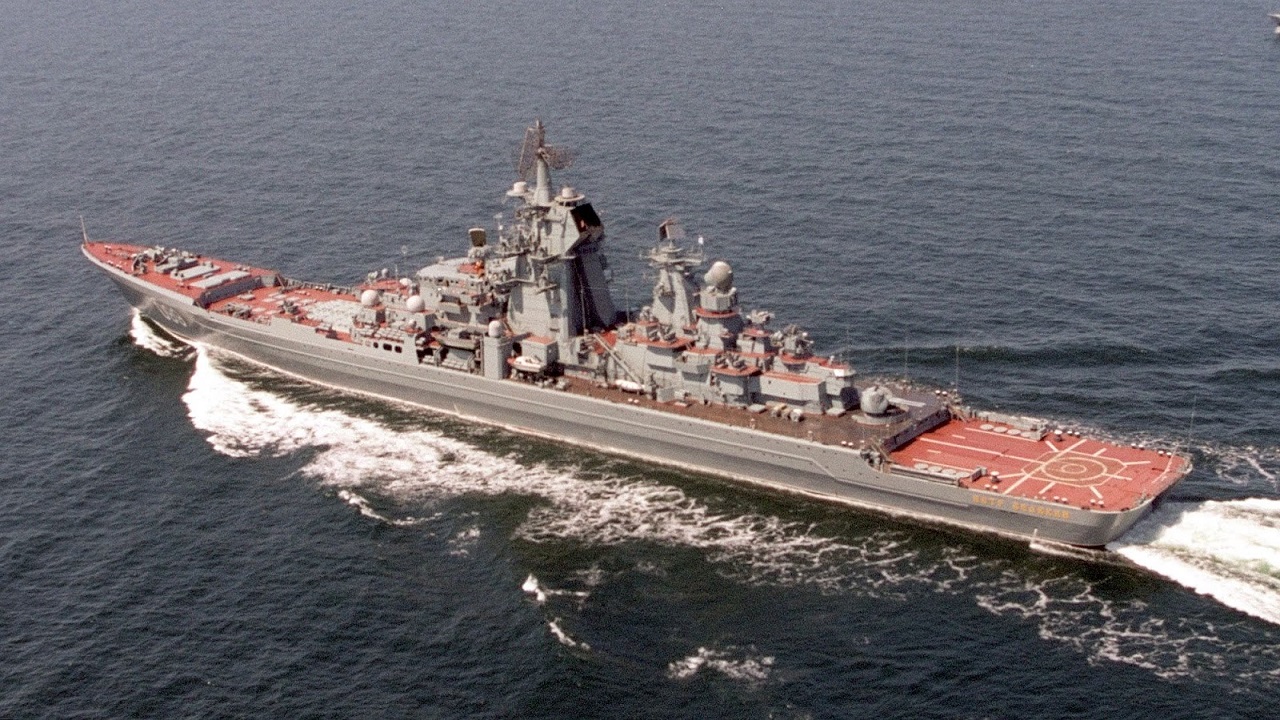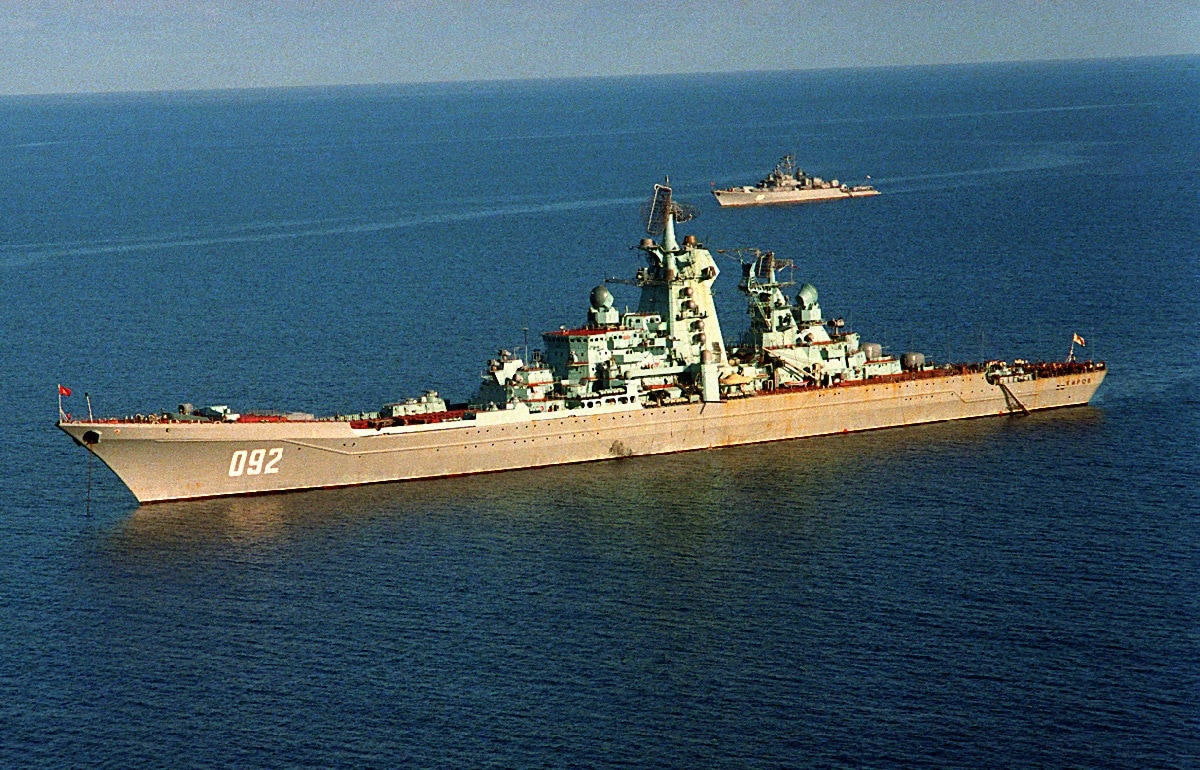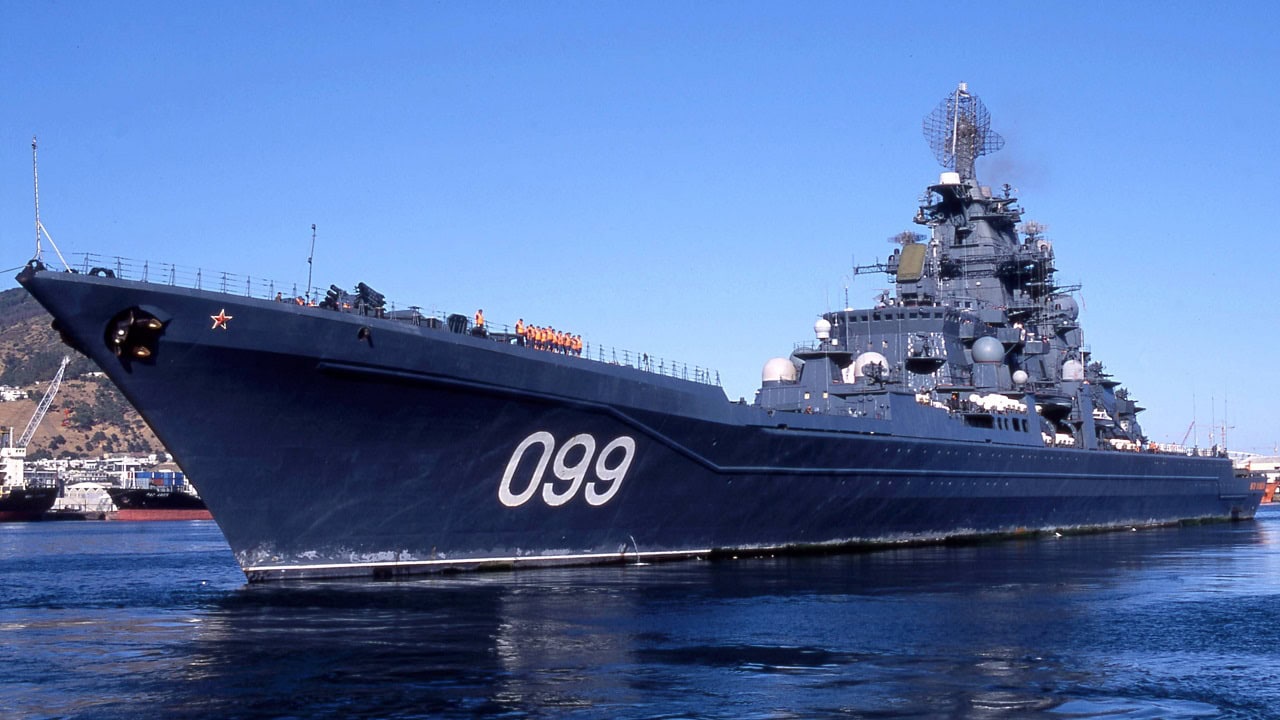Key Points and Summary: Russia’s Kirov-class battlecruisers, relics of the Soviet era, face an uncertain future in a maritime environment dominated by precision-guided weapons and drones.
-Only two remain: the Pyotr Velikiy (operational) and Admiral Nakhimov (under refit). These massive ships offer unparalleled firepower but are highly vulnerable to modern threats, including long-range missiles and unmanned systems.
-Modernization efforts could add advanced defenses like S-400 missiles and Zircon hypersonic weapons, yet their large radar cross-section and lack of adequate escort ships undermine their survivability. While they may retain utility in low-tech conflicts, their role in high-threat environments remains highly questionable.
Russia’s Kirov-Class Battlecruisers: Legends or Relics?
Russian ships have been decimated in the Black Sea by precision-guided Ukrainian rockets and “targeted” by Ukrainian drone boats, a scenario that has drastically reduced or arguably even eliminated Russia’s Black Sea threat.
This reality pertains directly to ongoing questions about whether Russia will fully “divest” itself of its large and quite vulnerable Soviet-era Kirov-class Battlecruisers.
If Russian warships and corvettes are proving quite vulnerable on the Black Sea, much larger antiquated WWI and WWII-type ships would seem to have little chance of survival.
This is mainly due to the arrival of long-range, highly precise ground-launched anti-ship missiles fortified by the arrival of unmanned vessels for surveillance and targeting.
Nonetheless, there are continued reports that Russia may continue to attempt to modernize its Kirov-class and sustain service life for at least one, despite the country’s cited budget and resource challenges emerging from the ongoing Ukraine war.
What will Russia end up doing with the Kirov-class?
The Kirov-Class, Explained
Russia only has two 1980s-era Kirov-class battleships, the Pyotry Velikiy (Peter the Great) and the Admiral Nakhimov, which is undergoing an expensive refit, as reported by slashgear.com earlier this year.
Therefore, the Pyotry Velikiy is the only Kirov-class battleship in Russia’s Northern Fleet.
Kirov-Class: Battlecruisers with No Future?
This leads to the central elements of the debate, most of which pertain to modernization.

Kirov-Class battlecruiser. Image Credit: Creative Commons.
Certainly, the heavy 28,000-ton Kirov-class battlecruiser brings a massive “firepower” advantage to deliver supporting fires for land attack in an amphibious operation, and its guns, weapons, and torpedoes could generate a high “volume” of fire upon any target.
However, the key question seems to pertain to survivability. Can something of that size and slow speed survive in a maritime warfare environment increasingly dominated by drones and long-range precision-guided weaponry launched from both ship and shore?
Large battleships would also easily be seen at great distances by satellites, drones, and ship-based radar.
The Key Question
Accordingly, any question of continued use for the Kirovs would relate to two key issues: Can it add value in a lower-tech threat environment where it can add massive firepower without being destroyed?
Can it be sufficiently modernized to have even a small chance of mitigating, stopping, or thwarting advanced attacks?
The effectiveness of its modernization program sheds light upon this question, meaning Admiral Nakhimov would need to be retrofitted with advanced EW, sensors, radars and even ship-fired interceptors.

Aerial starboard quarter view of the Soviet Kirov-class guided missile destroyer FRUNZE underway back in 1985.
The troubled state of the Russian Navy might suggest that the country cannot modernize its fleet sufficiently with the necessary ship defenses and countermeasures.
Russia is known to be capable of producing technologically advanced weapons systems. However, it cannot regularly make them “at scale” in a way that would present a significant threat.
Producing at “scale,” however, may not be as critical when modernizing a single ship. In this case, perhaps Russia could upgrade its Kirov-class ship with advanced sensors, interceptors, and EW.
Such enhancements may not sufficiently protect the ship anyway, as the Russian Navy would likely be challenged to deliver supportive warships in position to protect the battlecruiser.
Large US Navy aircraft carriers, for instance, operate with the advanced protections afforded by destroyers and cruisers, and Russia may need help to deploy something comparable.
Some Possible Defenses Could Work
At the same time, the Nakhimov may receive S-400 missile defenses, Zircon cruise missiles, and other offensive capabilities, something cited in an interesting essay by 19FortyFive’s Brent Eastwood.

A port view of the Soviet nuclear-powered guided missile cruiser KIROV at anchor. In the background is a Soviet Krivak I-class guided missile frigate.
This might improve survivability and add greater stand-off lethality, yet it may not solve the large ship’s glaring vulnerability.
The ship’s size and many protruding structures all but guarantee that it will easily be seen by radar and air surveillance assets.
Could air defenses and hypersonic missiles operating from stand-off ranges solve this problem?
Maybe.
About the Author: Kris Osborn
Kris Osborn is the Military Affairs Editor of 19FortyFive and President of Warrior Maven – Center for Military Modernization. Osborn previously served at the Pentagon as a Highly Qualified Expert with the Office of the Assistant Secretary of the Army—Acquisition, Logistics & Technology. Osborn has also worked as an anchor and on-air military specialist at national TV networks. He has appeared as a guest military expert on Fox News, MSNBC, The Military Channel, and The History Channel. He also has a Masters Degree in Comparative Literature from Columbia University.

